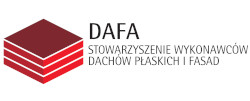prof. dr hab. inż. Andrzej M. Brandt Instytut Podstawowych Problemów Techniki PAN
Autor do korespondencji: e-mail: Ten adres pocztowy jest chroniony przed spamowaniem. Aby go zobaczyć, konieczne jest włączenie w przeglądarce obsługi JavaScript.
DOI: 10.15199/33.2015.09.07
Trwałość poważnych konstrukcji betonowych jest rozpatrywana zawsze z uwzględnieniem wszystkich warunków ich użytkowania, przeważnie z uwagi na wymagania ekonomiczne. W przypadku elektrowni jądrowych trwałość betonu jest ściśle związana z wymaganiami bezpieczeństwa personelu i otoczenia. Beton jest jednym z głównych materiałów w różnych konstrukcjach w elektrowni jądrowej, a także w osłonach w składach materiałów radioaktywnych i w urządzeniach leczniczych. Problem trwałości obejmuje wpływ wszystkich oddziaływań środowiska i powolne procesy wewnętrzne w betonie, a szczególnie wpływ długotrwałego promieniowania na beton w okresie 60 lat i dłużej. W artykule zagadnienie wpływu promieniowania jonizującego na beton jest rozpatrzone na podstawie najnowszych wyników badań i wymagań normowych.
Słowa kluczowe: starzenie betonu, osłona reaktora, trwałość betonu
* * *
Durability of concrete in the nuclear energy building object
The durability of important concrete structures is considered always with respect to all requirements of exploitation mostly from the viewpoint of economics. In the case of Nuclear Power Plants (NPPs) the durability of concrete is closely related to the safety of staff and of environment. Concrete is used extensively in main utilities in every NPP, but also in the shields in the storages for nuclear waste and in therapeutic installations. The problem of durability covers the influence of all agents that act on concrete structures from the environment and slow processes in the concrete itself, but the influence of radiation is studiedwith particular attention. All these actions should be taken into account for the exploitation over 60 years, or perhaps longer. In the paper the problem how the ionizing radiation may influence concrete durability is analyzed on the basis of recent test results and recommendations.
Keywords: aging concrete, reactor shield, durability of concrete.
Literatura:
[1] Brandt A. M. (2013). Beton jako materiał osłon w budownictwie związanym z energetyką jądrową. Cement Wapno Beton, Polski Cement, 2, 115 – 132.
[2] Brandt A. M., Jóźwiak-Niedźwiedzka D. (2013). O wpływie promieniowania jonizującego na mikrostrukturę i właściwości osłon betonowych, przegląd. Cement,Wapno, Beton, 4, 2013, 216 – 237.
[3] Kaplan M. F. (1989). Concrete radiation shielding. Longman Scientific and Technical, 457 s.
[4] Fillmore D. L. (2004). Literature review of the effects of radiation and temperature on the aging of concrete. Idaho Nat. Eng. and Env. Lab., Idaho Falls, 26 s.
[5] Callan E. J. (1952). Thermal expansion of aggregates and concrete durability. J. Amer. Concr. Inst. Proceedings, Feb. 48, page 485; discussion Dec., 504 – 511.
[6] Soo P., Millian L. M. (2001). The effect of gamma radiation on the strength of Portland cement mortars. J. of Mat. Sci., Letters 20, 1345 – 1348.
[7] William K., Yunping Xi, Naus D., Graves H. L. III (2013). A review of the effects of radiation on microstructure and properties of concretes used in nuclear power plants. US Nuclear Regulatory Commission (NUREG).Washington, DC.
[8] Mirhosseini S. S. (2010). The effects of nuclear radiation onAging reinforced concrete structures in nuclear power plants, MAThesis,Waterloo University, 154 s.
[9] Alexander S. C. (1963). Effects of irradiation on concrete. Final results. Atomic Energy Research Establishment, Harwell, 34 s.
[10] Jaeger R, G. ed. (1975). Engineering Compendium on Radiation Shielding. Springer-Verlag, 436 s.
[11] ACI 349.3R-02 (2002). Evaluation of existing nuclear safety-related concrete structures, 18 s.
[12] Konno T. (2002). Concrete properties influenced by radiation dose during reactor operation. Nucl. Energy Agency, Comm. for the Safety of Nucl. Install., 7, vol. 2.
[13] Ichikawa T., Kimura T. (2007). Effect of nuclear radiation on alkali-silica reaction of concrete. J. of Nuclear Science and Technology, 44, 10, 1281 – 1284.
[14] Maruyama I., Kontani O., Sawada S., Sato O., Igarashi G., Takizawa M. (2013). Evaluation of irradiation effects on concrete structure – background
Otrzymano: 12.08.2015 r.
Materiały Budowlane 9/2015, str 26-28 (spis treści >>)




























